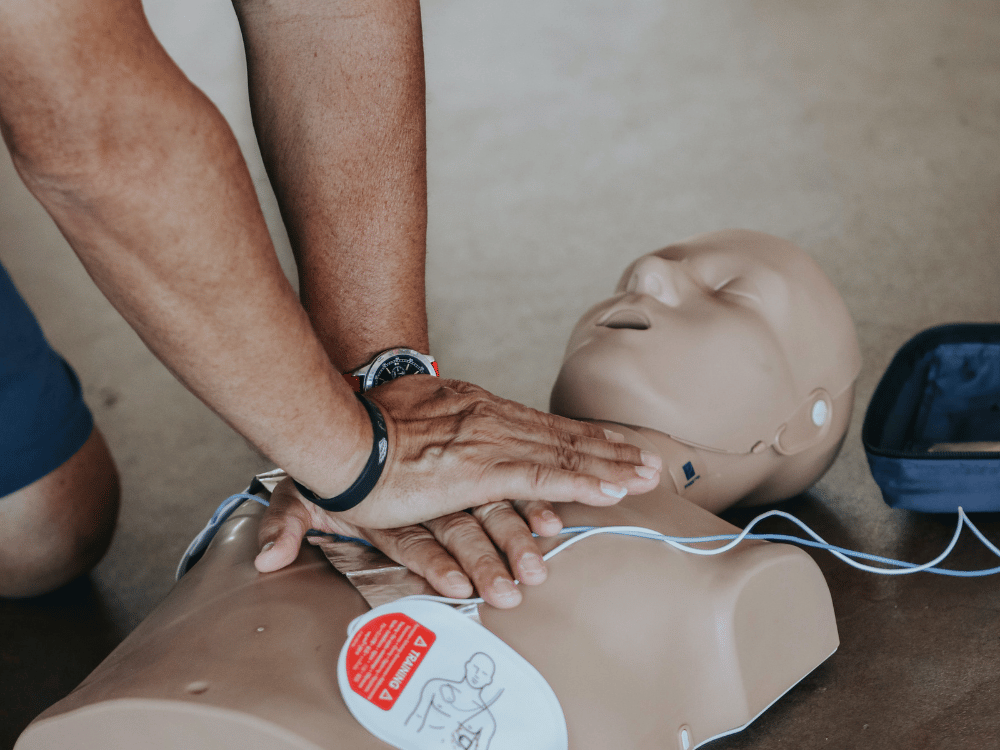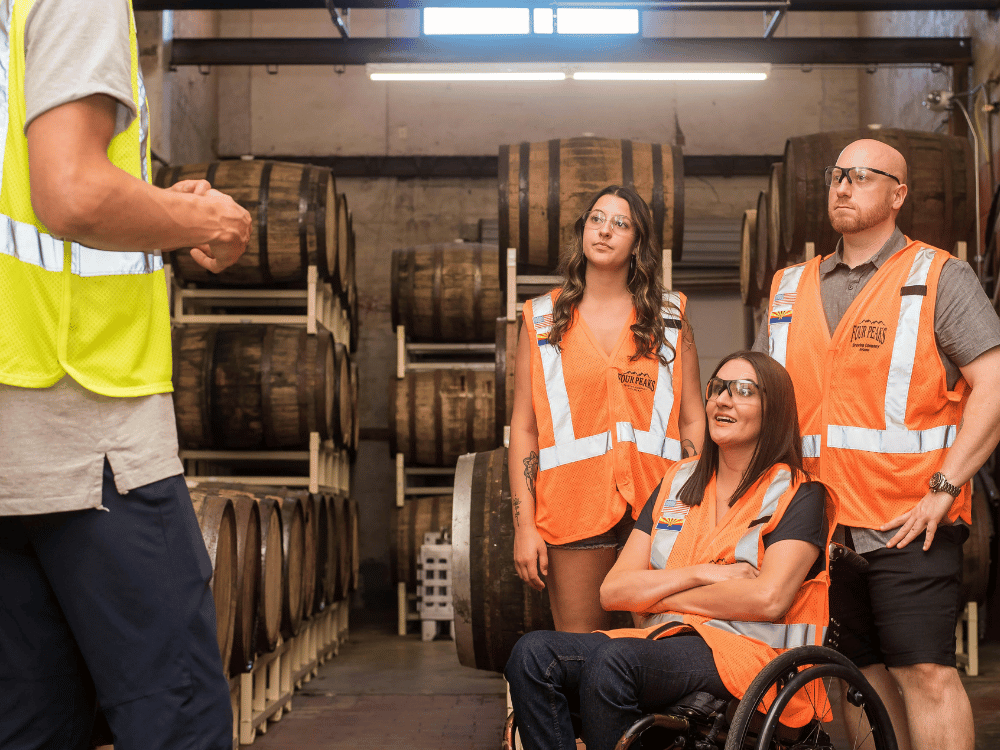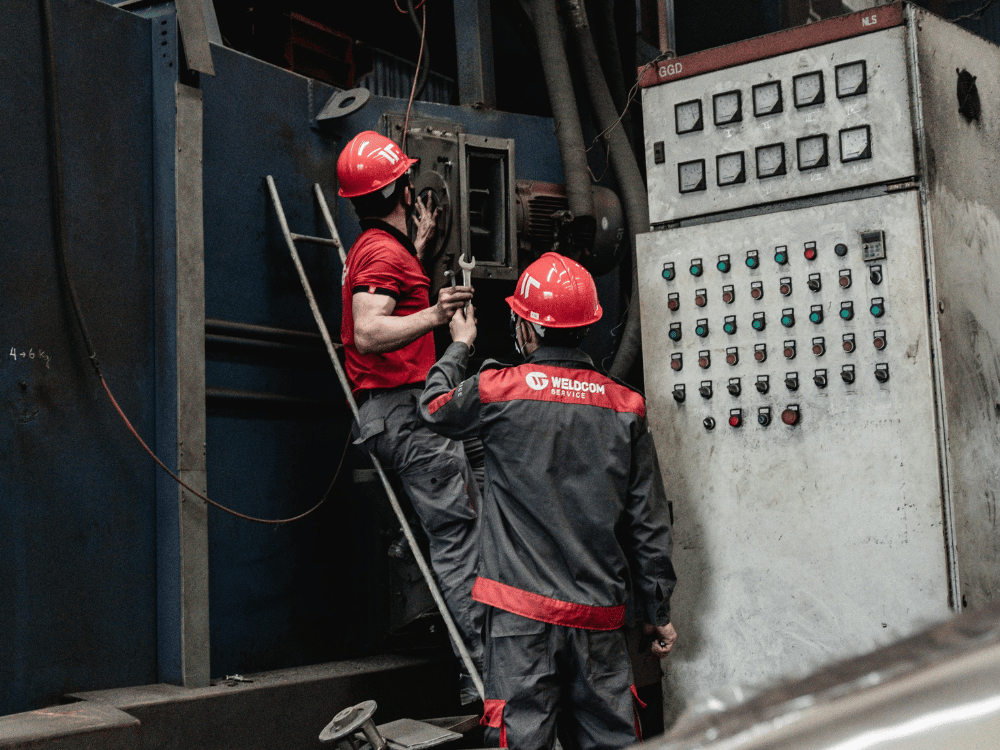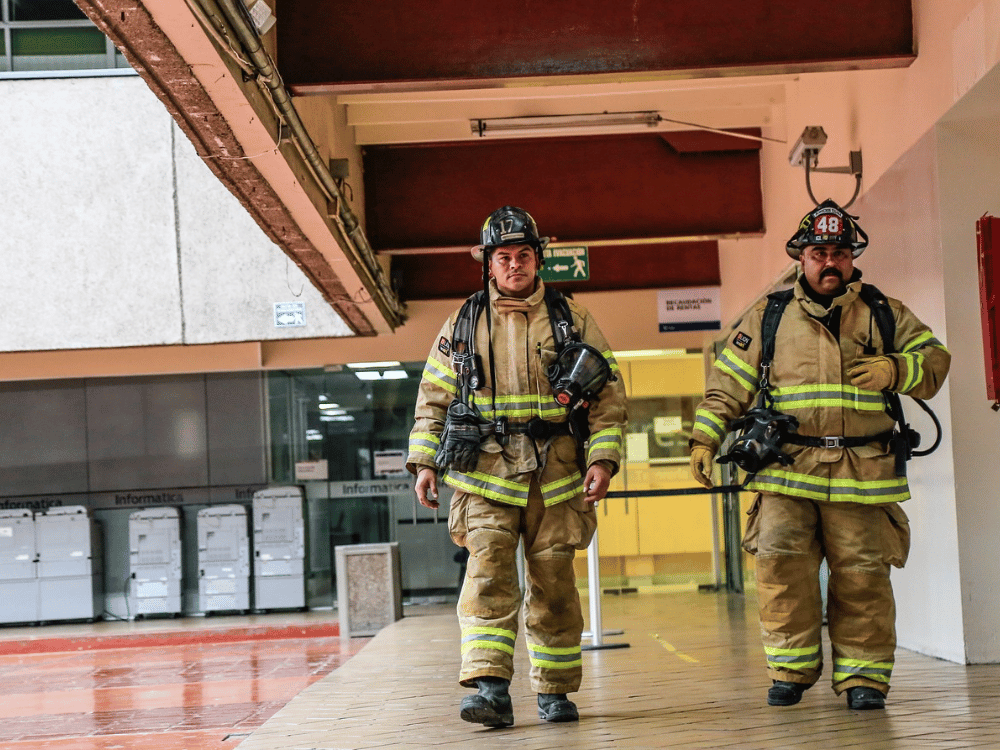Maintaining a positive health and safety culture is an essential part of any workplace, regardless of the size of the company, or the industry it’s operating in. Good health and safety practices can help reduce workplace accidents and injuries, improve productivity, and foster a positive work environment.
As such, it’s well worth getting everyone on board: employees and management, contractors and temporary workers alike. Here are some easily achievable ways to promote a positive health and safety culture in the workplace.
Key points:
- Management buy-in is essential for the health and safety culture in an organisation to flourish. Managers and team leaders should lead by example and avoid cutting corners at all costs.
- A health and safety program should be easily accessible, and open communication should be encouraged. Everyone in the organisation should be able to report incidents or near misses readily to management, with appropriate steps taken to remedy incidents, and learn from them.
- Health and safety training should be given to everyone in the organisation, including temporary staff. Procedures should be reviewed regularly to be in line with best practices, and refresher training should be given to all staff and contractors at regular intervals.
TL;DR – How to Improve Safety Culture in the Workplace
Workplace safety culture is an essential component of any business. But you can improve your company’s safety culture by following these eight steps:
- Develop a comprehensive health and safety policy.
- Give regular training and encourage staff to undertake health and safety courses.
- Provide safety resources, assess risk, and audit regularly.
- Encourage open communication.
- Recognise and reward safe behaviour.
- Lead by example.
- Promote a positive work environment.
- Emphasise the importance of mental health.
Failure to promote a positive safety culture can have dire consequences for your business and employees.
For example, Kingsland Drinks Ltd was fined £800k after poor training and lax on-site safety procedures meant an HGV diver was struck and killed by a forklift truck at a Salford depot.
What is Safety Culture?
According to the Health and Safety Laboratory:
“Safety culture is a combination of the attitudes, values and perceptions that influence how something is actually done in the workplace, rather than how it should be done…
“Poor safety culture has contributed to many major incidents and personal injuries and can be just as influential on safety outcomes as an organisation’s safety management system itself.”
As such, safety culture encompasses the mindset and attitude regarding health and safety policies and procedures. A positive culture is one that has broad buy-in and support company-wide.
In fact, safety culture is an integral part of the overall company culture, and it’s important that it functions well. According to the UK Health and Safety Executive (HSE):
“Organisations with a positive safety culture are characterised by communications founded on mutual trust, by shared perceptions of the importance of safety and by confidence in the efficacy of preventive measures.”.
What Does Creating a Culture of Safety Mean?
Creating a culture of safety in your business means developing an environment in which every person feels safe and valued when they come to work.
Workplace safety culture should start at the very top of the business, with employers placing high importance on behavioural safety. That approach is disseminated to teams via line managers who are charged with gatekeeping operational safety in their sectors.
Safe workplaces result in lower costs, fewer absences and fewer injuries.
For instance – following several behavioural safety shifts at British Sugar, the industrial giant saw a two-thirds reduction in both lost time and minor injury frequency rates over 10 years.
Why Does Health and Safety Sometimes Get a Bad Rep?
Before we go further, let’s address the elephant in the room. ‘Health and safety’ is sometimes used dismissively, as there are those that perceive health and safety initiatives as meddling, or even at odds with business progress and productivity.
This characterisation is obviously unhelpful and speaks to an outdated mindset. For anyone who’s ever worked at ground-floor level, it should be obvious that people should be able to perform their jobs safely, and in a manner which doesn’t have a negative effect on their wellbeing.
It’s also reckless to allow, encourage or pressurise workers to cut health and safety corners in order to reach deadlines.
As we’ll see, health and safety plays an important role in a functioning workplace. After all, a healthy, happy worker is a productive worker.
Types of Safety Culture
Your business’s safety culture defines how serious you are about moving from a low-level approach to a higher-level cultural dynamic.
Sony Cherian, an incredibly experienced QHSE professional, suggests that there are generally four core types of safety culture:
- Forced culture: Where safety officers are seen more as enforcers focused on catching employees out rather than education.
- Protective culture: Highlights managers who endlessly introduce new policies when incidents happen. This approach can lead to worker confusion and policy dilution.
- Involved culture: A culture based on training – but only for workers. Management encourages training opportunities but rarely attends.
- Integrated culture: Comprehensive training offered and taken by all, including CEOs. Integrated culture is the best way to bring low safety culture up the levels of comprehension.
How to Improve Safety Culture at the Workplace
There are a few sensible, practical steps you can follow to encourage a positive health and safety culture in your work environment. Please note that while each is worthwhile in itself, they are all interconnected. For the best chance of a truly healthy work culture, it’s a good idea to tick all the following boxes.
#1: Develop a comprehensive health and safety policy
A comprehensive health and safety policy underpins a positive safety culture. It should outline the company’s commitment to health and safety, and the responsibilities of management and employees alike.
On a practical level, it should detail the procedures for identifying and reporting hazards, incidents and near misses. It must be easily accessible to all employees, in visible locations such as a safety noticeboard, or signposted clearly on the company intranet. It should also be reviewed regularly to ensure it’s up to date.
#2: Undertake and give regular training on health and safety practices
Everyone in the organisation should receive training on the company’s health and safety policy, safe work practices and emergency procedures. This means employees, contractors, temporary staff – and yes, management too.
Health and safety training should be ongoing, and those in the organisation should receive regular refreshers to ensure they stay up to date. This will keep them not only informed, but also engaged in the health and safety culture generally.
In addition, companies must keep up with changing regulations and industry best practices, to ensure their safety policies and procedures remain effective and current.
If you’re responsible for health and safety in your workplace, you can learn how to promote a positive health and safety culture on the NEBOSH General Certificate course.

#3: Provide safety resources, assess risk and audit regularly
Obviously, to help maintain a safe workplace, adequate safety resources should be provided. This includes supplying personal protective equipment where required, keeping first-line equipment such as first aid kits, and defibrillators in certain workplaces. Companies must also ensure that all equipment, machinery and tools are maintained and inspected regularly to prevent accidents and injuries.
It’s also important to allocate the necessary time and funding for safety initiatives and training.
Regular risk assessments, safety audits and inspections can help identify hazards and areas for improvement. Audits should be conducted by trained safety professionals, or employees who are knowledgeable and trained about safety practices. The results should be shared with management and employees, and any identified hazards need to be addressed promptly.
#4: Encourage open communication
It’s good to talk. Employees should be encouraged to report any safety concerns, hazards and incidents to management. There should be a system in place for reporting and investigating incidents and near misses, and the results should be shared with all employees. It’s also worth conducting a root cause analysis to ensure similar incidents are avoided in future.
It’s important to involve employees in the safety program by seeking their input, feedback and suggestions for improvement. Employees are often the first to identify hazards and risks in their work environment, and their involvement in the safety program can help create a sense of ownership and accountability.
Management should also provide regular updates on safety performance, goals and initiatives to keep employees informed.
#5: Recognise and reward safe behaviour
Recognising and rewarding safe behaviour can help reinforce a positive safety culture. Employees should be recognised for following safety procedures, reporting hazards and taking steps to prevent incidents. Rewards can be as simple as verbal recognition, or as formal as inclusion in monthly or annual company awards.
Rewards and gamification can also help people in the organisation to find the health and safety program more appealing generally.
#6: Lead by example
It can’t be stressed enough that management plays a critical role in promoting a positive safety culture. Leaders should set the tone by modeling safe behaviours, following safety procedures and demonstrating a commitment to safety. When leaders prioritise safety, employees are more likely to follow suit.
#7: Promote a positive overall work environment
Fostering a positive work environment generally can help with its safety culture. Organisations which promote teamwork, encourage open communication and engender a sense of belonging and respect are likely to have a better safety record. Why? Well, when employees feel valued and supported, they’re more likely to take ownership of their safety and the safety of their colleagues.
#8: Emphasise the importance of mental health
Similarly, mental health is an essential component of overall health and safety. Companies should prioritise mental health initiatives, and provide support for employees who may be struggling. This includes providing access to mental health resources, promoting work-life balance, and reducing stress in the workplace.
How to Change a Safety Culture in the Workplace
Following those eight steps is a great way to ensure a strong safety culture in your business. But where do you start with these shifts?
Communication is a constant in every successful behavioural improvement strategy.
Whether that’s creating a safe space for employees to voice concerns or report breaches or management demonstrating a commitment to improvement by praising safe processes.
However, actions can also speak louder than words when showcasing managerial commitment.
Improving worker knowledge by enrolling them in recognised safety courses, like the NEBOSH National General Certificate, can have a lasting impact on numerous areas such as your safety culture, team morale and staff turnover.
For example, a report by TalentLMS found that 75% of surveyed workers said staff training positively impacted their engagement at work. Additionally, 76% said they would be less likely to look for alternative employment as a result of receiving development opportunities.
How to Measure Safety Culture Success
There are numerous ways to measure safety culture success. Of course, the most apparent metric would be the reduction of incidents over a given period. But how do you keep track dynamically?
1. Safety Performance Indicators
Safety performance indicators help review whether changes or updates to safety procedures or training have succeeded. Benchmark these findings against previous reports or industry averages to assess the level of success.
2. Safety Climate Surveys
Surveys leverage employee and management feedback channels to measure the perception and implementation of safety procedures in the workplace.
3. Focus Groups
Focus groups provide more opportunities for open dialogue about workplace safety. Sessions promote freedom of thought and demonstrate a managerial commitment to colleague safety. Additionally, they help leaders assess safety procedural comprehension on a base level.
4. Regular Safety Audits and Inspections
Objective evaluations allow you to measure whether your safety policies and procedures are meeting legal requirements and being adhered to.
5. Behaviour Observations
Observations are also a great way to assess whether any knowledge from safety training is being implemented. These reviews are also perfect for identifying initial strengths and areas for improvement.
6. Safety Culture Maturity Models
There are a few different Safety culture maturity models. But they are all designed to take your workplace from lagging to a leading model and help your team see workplace safety as a commitment by everyone rather than a “not my job” approach.
7. Safety Suggestions
Building on the surveys and focus groups approach, another measure can be implementing feedback channels that encourage staff to speak up about safety deficiencies – but in terms of standard processes and their own comprehension.
As we mentioned earlier, most of these measures can be split into two primary metrics – lagging and leading.
Put simply, lagging metrics refer to measurement systems that are implemented as a result of an incident. In contrast, leading metrics are more preventative.
Businesses should aim to pull their culture into a leading state as efficiently as possible. Creating a more holistic atmosphere around workplace safety is crucial to this.
Negative Indicators of Health And Safety Culture
On the flip side of this whole approach, how would you know if you have a poor health and safety culture?
Similar to the key indicators of a positive environment, an increase in incidents is not the only metric of declining standards.
There are lots of negative indicators of health and safety culture, too. Some of these are:
- High rates of employee absenteeism
- Blame culture
- Lack of health and safety education
- Workers concerned about safety are the minority
- Workers thinking of project speed rather than safety
- Expensive insurance
- Weak or unclear health and safety management system
- Poor safety policy compliance
Positive Indicators of Health And Safety Culture
Now we know about some good measurement techniques and what negative indicators look like. Following that, let’s overview how you know when you’re improving safety culture in the workplace.
- Increased productivity: Staff who feel valued, heard, and given ample opportunities to upskill improve productivity.
- Healthier workplace environment: Empowering employees can harbour healthier workplaces and foster an environment based on shared pride – leading to a reduction in incidents.
- Reduced staff absence through injury: Employee absence calculators show absenteeism costs UK businesses more than £14 million annually. Proper training and an increased safety culture can reduce this number significantly.
- Enhanced communication: The key to improving safety culture in the workplace is open communication. It’s no surprise that some of the safest business environments also feature teams in constant communication.
- Happier workforce: When you commit to improving the culture of your business, studies show that staff retention rates can improve by up to 50%. Once again, this proves the link between staff safety, professional development opportunities and worker contentment.
Frequently Asked Questions (FAQs)
Here are some frequently asked questions on developing a safety culture in the workplace.
What is the Culture of Safety Model?
A culture of safety model defines how a company approaches workplace safety—usually comprising a set of processes to safeguard employee and visitor health on-site.
What is the Culture of Safety in Healthcare?
A culture of safety in healthcare describes an environment in which staff and patients are valued, supported, connected and trained to a high standard. Thus ensuring clinical environments, homes, and workspaces remain clear and safe.
What is Safety Culture in Construction?
A safety culture in construction is a commitment to safe equipment usage, correct deployment of PPE, and adherence to Building Safety Regulations.
These standards can be maintained through regular inspections and risk assessments.
Conclusion: What a positive health and safety culture achieves
By prioritising health and safety, companies can create a work environment where employees feel valued, supported and motivated to perform at the top of their abilities. After all, it’s good to know that someone has your best interests at heart.
A positive safety culture not only reduces accidents and injuries, but also enhances productivity, employee morale and overall business success. So it’s a win-win all round. It’s worth reminding stakeholders that investment in health and safety is not only good in itself, but ultimately contributes to the bottom line.
It should also be noted that promoting a positive health and safety culture isn’t a one-time effort, but an ongoing process. It requires commitment, dedication and continuous improvement. Companies must regularly evaluate their safety performance, seek feedback from employees, and take action to address any issues and improve their safety programs.
By following these principles, companies can create a work environment where employees feel safe, valued and motivated to perform their best. This will result in a more productive, successful and sustainable business – which is in everyone’s best interests.
Thinking of putting these steps into practice? Check out TSW’s health and safety courses to take your know-how to the next level.

















